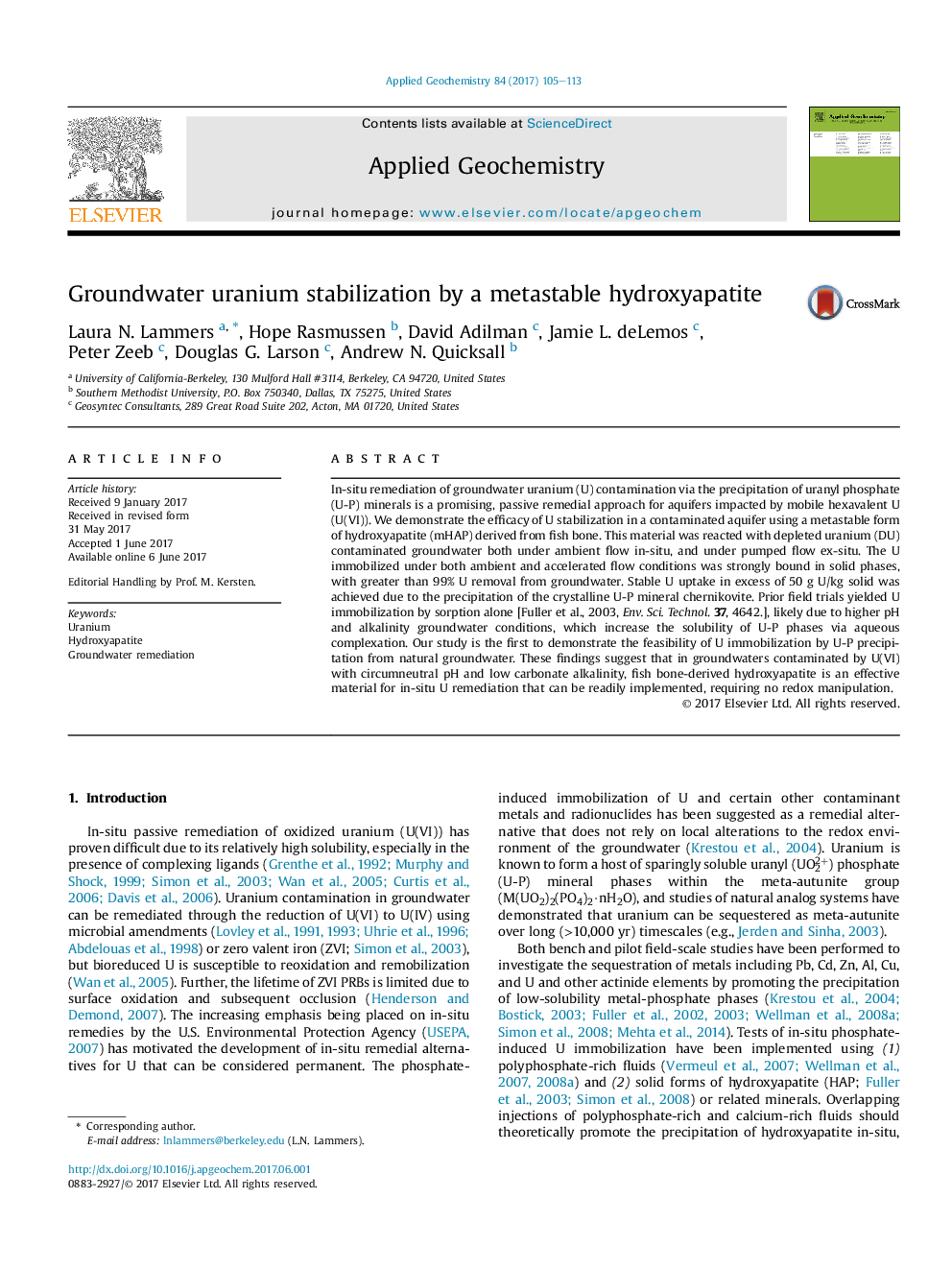| کد مقاله | کد نشریه | سال انتشار | مقاله انگلیسی | نسخه تمام متن |
|---|---|---|---|---|
| 5752516 | 1620207 | 2017 | 9 صفحه PDF | دانلود رایگان |
- Widespread groundwater U contamination warrants the development of passive in-situ remedies.
- Fish bone derived hydroxyapatite is found to effectively immobilize aqueous U in an aquifer.
- Surface complexation and uranyl phosphate mineralization both contribute to stable U uptake.
- High carbonate alkalinity can reduce efficacy by enhancing aqueous U complexation.
In-situ remediation of groundwater uranium (U) contamination via the precipitation of uranyl phosphate (U-P) minerals is a promising, passive remedial approach for aquifers impacted by mobile hexavalent U (U(VI)). We demonstrate the efficacy of U stabilization in a contaminated aquifer using a metastable form of hydroxyapatite (mHAP) derived from fish bone. This material was reacted with depleted uranium (DU) contaminated groundwater both under ambient flow in-situ, and under pumped flow ex-situ. The U immobilized under both ambient and accelerated flow conditions was strongly bound in solid phases, with greater than 99% U removal from groundwater. Stable U uptake in excess of 50 g U/kg solid was achieved due to the precipitation of the crystalline U-P mineral chernikovite. Prior field trials yielded U immobilization by sorption alone [Fuller et al., 2003, Env. Sci. Technol. 37, 4642.], likely due to higher pH and alkalinity groundwater conditions, which increase the solubility of U-P phases via aqueous complexation. Our study is the first to demonstrate the feasibility of U immobilization by U-P precipitation from natural groundwater. These findings suggest that in groundwaters contaminated by U(VI) with circumneutral pH and low carbonate alkalinity, fish bone-derived hydroxyapatite is an effective material for in-situ U remediation that can be readily implemented, requiring no redox manipulation.
Journal: Applied Geochemistry - Volume 84, September 2017, Pages 105-113
